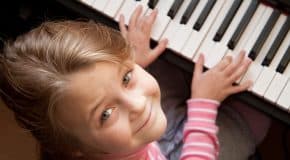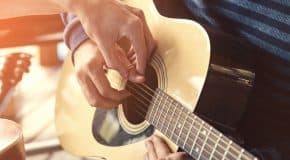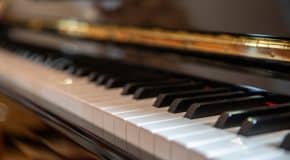
On average, most students Lessons In Your Home works with on piano fall into the 7 to 12 year old age range. We definitely have a lot of students who are younger and older, but as a general age group, this is the most popular. It seems also that authors of the standard, popular piano methods also recognize this trend, so there is a wealth of resources available in not only traditional weekly materials, but also in engaging supplemental books and sheet music. In my experience working with this age group, I have found some favorite go-to resources over the years that compliment my teaching style. Every teacher is unique, and different books work for different instructors, but here are my top picks:
1. Piano Adventures by Nancy and Randall Faber: This method is a staple in my curriculum, and I interchangeably use the Technique, Lessons, Performance, and Theory books. I always use the Lessons book, but I generally choose one or two of the others to go along with each level for the student. I love the pacing of these books and how new topics are introduced. Also, a big plus is that the hand positions never stay the same for very long, so students get used to moving around on the piano very early. This method is very comprehensive with levels ranging from Primer to Level 5, which covers the first introduction to the piano through intermediate/early advanced repertoire.
2. Bastien Piano Basics by Jane and James Bastien: When I started taking piano lessons, I began with the Bastien method and completed all levels before moving on to an intermediate method. Books include Technique, Piano, Performance, and Theory. This is a very solid, well-rounded curriculum for weekly assignments and is still quite popular with teachers and students everywhere. Like the Faber method, this method begins with a Primer level and goes through Level 4 to take students to an intermediate level of playing. I generally choose Faber over Bastien if staring with a new student because the look and feel of the books is more modern, but at core of this method is equally strong as far as establishing fundamentals is concerned.
3. MusicNotes.com: This website is a new favorite for supplemental songs. I like to bring in pieces outside of the usual weekly materials to engage, inspire, and motivate students, and as a resource, I find that the site is very reliable. Once a student has reached the end of Level 1 in either Bastien or Faber, I find that the easy piano versions of popular songs are a huge hit with my 7 to 12 year olds, as they can tell me songs that they like or have an interest in playing (especially pop songs), and I can easily find a version that will work for them or use what I find to make a simplified transcription. A huge perk of this site is that most songs are available for digital purchase, so I can buy the sheet music and print it out from home.
Because there is so much literature and sheet music available to this age range, other teachers may have their own top picks that are equally great, and much of the success in lessons is determined by a great relationship and understanding between student and teacher.



One thought on “A D.C. & Baltimore Piano Teacher’s Favorite Methods: Age 7 to 12 Years Old”